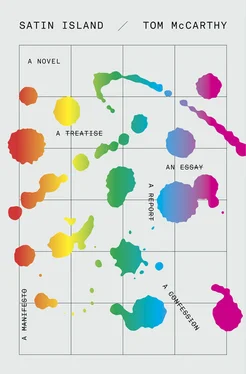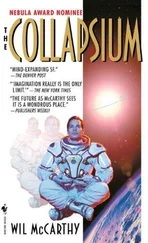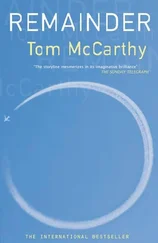5.2Peyman said lots of things. That’s what he did: put ideas out, put them in circulation. He did this via publications, websites, talks at conferences; via the quasi-governmental think tanks he was constantly invited to head up, or the interviews he’d give in the trade press. His ideas took the form of aphorisms: Location is irrelevant: what matters is not where something is, but rather where it leads … What are objects? Bundles of relations … Each of these nuggets was instantly memorable, eminently quotable. On urbanism: A city has no “character”; it is a schizoid headspace, filled with the cacophony of contradiction . On design: The end point to which it strives is a state in which the world is one hundred percent synthetic, made by man, for man, according to his desires … These aphorisms were his currency; he traded in them, converting them, via the Company, into tangible undertakings that had measurable outcomes, which in turn helped spawn more concepts and more aphorisms, always at a profit. The concepts were all generated in-house and collectively: that’s how his outfit worked. We’d come at briefs, and at the big ones in particular, from several angles, bringing all our intellectual disciplines to bear on them — the Company had people who’d trained as economists, philosophers, mathematicians, architects and who knows what else on its books — and, slapping the pertinent offerings of each of these down on the collective table (or up on the collective sheet of glass), formulate new concepts that Peyman, as the Company’s public face and poster-boy, would then launch into circulation. Seeing these in print, observing them being cited, appropriated, sampled, cross-bred, both by others and by Peyman himself, was like encountering an amalgam of our own minds, our own thoughts, returning to us on a feedback loop. Without Peyman, though, without the general — and generative — mechanism he had set in place and over which he constantly presided, we would never have come up with these thoughts in the first place: they were quite beyond us.
5.3Thus Peyman, for us, was everything and nothing. Everything because he connected us, both individually and severally, our scattered, half-formed notions and intuitions, fields of research which would otherwise have lain fallow, found no bite and purchase on the present moment — he connected all these to a world of action and event, a world in which stuff might actually happen; connected us, that is, to our own age. And not just us: it worked the same way for the Company’s clients. That’s what they were buying into: connection and connectedness — to ideas, expertise, the universe of consequence, the age. It sometimes seemed as though the very concept of “the age” wouldn’t have been fully thinkable without Peyman; seemed that he invented, re-invented it with every passing utterance, or simply (with the overlay of continents and times and cultures stored up in his very genes, his mixed Persian, South American and European ancestry) by existing. He connected the age to itself, and, in so doing, called it into being. And, at the same time, he was nothing. Why? Because, in playing this role, he underwent a kind of reverse camouflage (some anthropologists do speak of such a thing). The concepts he helped generate and put in circulation were so perfectly tailored to the age on whose high seas they floated, their contours so perfectly aligned with those of the reality from which they were drawn and onto which they constantly remapped themselves, that you’d find yourself coming across some new phenomenon, some trend — in architecture or town planning or brand strategy or social policy, in Europe, the States, India, it didn’t matter what or where — and saying: Oh, Peyman came up with a term for this; or: That’s a Peyman thing . You’d find yourself saying this several times a week — that is, seeing tendencies Peyman had named or invented, Peymanic paradigms and inclinations, movements and precipitations, everywhere, till he appeared in everything; which is the same as disappearing.
5.4He disappeared in a quite literal sense for us, his Company underlings. I mean that he was hardly ever actually, in an in-the-flesh way, there: on almost any given day he’d be off in Oslo, or São Paulo, or Mumbai, meeting with high-powered clients, advising presidents and mayors, or just generally helping draw up blueprints for the future of the world. Sometimes I almost doubted his existence. Not literally, of course: I knew that the dusty-skinned man bearing Peyman’s name was Peyman. But I wondered sometimes whether, like in that Hitchcock movie North by Northwest , whose lead character finds himself inhabiting a role that’s been established elsewhere and already, Peyman didn’t function as some kind of construct, a convenient front. For whom? I don’t know. What Machiavellian cabal, what shady interest group, what nefarious — if inspired — alliance of the influential and manipulative, with what tools and channels at their beck and call, could maintain this type of illusion? In reality, no such cabal was needed. Gods, for many tribes, are self-sustaining, and perpetuate their operation without ranks of priests pulling the witch-hut’s levers and ventriloquising for the carved idols. Like a god, Peyman withdrew, secluded himself from us, took up spectral residence within some sacred recess full of ministers and moguls over whom he held sway, not the other way around. I’d imagine him consorting with them all, surrounded by them like a sultan by his harem. But, of course, for them as well, he was secluded; from them, too, withdrawn. He, after all, would drop into their offices and ministries, then jet back out again. They probably envisioned him consorting with us back in his (to their minds) mystical headquarters — and (who knows?) maybe also wondered, in their more reflective moments, whether he wasn’t some kind of collective fantasy, a self-sustaining deity whose nature they didn’t really understand but in whom they still had to believe , because, well, if not him, then … what? I took some solace in the thought of them picturing us — me — haremed up with him, bathed in his connective radiance constantly, day after day. Although, of course, I wasn’t: I was sat down in a basement, listening to ventilation.
5.5The Company’s logo was a giant, crumbling tower. It was Babel, of course, the old biblical parable. It embodied one of Peyman’s signature concepts. Babel’s tower, he’d say, is usually taken to be a symbol of man’s hubris. But the myth, he’d carry on, has been misunderstood. What actually matters isn’t the attempt to reach the heavens, or to speak God’s language. No: what matters is what’s left when that attempt has failed. This ruinous edifice (he’d say), which serves as a glaring reminder that its would-be occupants are scattered about the earth, spread horizontally rather than vertically, babbling away in all these different tongues — this tower becomes of interest only once it has flunked its allotted task. Its ruination is the precondition for all subsequent exchange, all cultural activity. And, on top of that, despite its own demise, the tower remains: you see it there in all the paintings — ruined, but still rising with its arches and its buttresses, its jagged turrets and its rusty scaffolding. What’s valuable about it is its uselessness. Its uselessness sets it to work: as symbol, cipher, spur to the imagination, to productiveness. The first move for any strategy of cultural production, he’d say, must be to liberate things — objects, situations, systems — into uselessness. I read this for the first time, long before I worked for him, in Creative Review; then later, with slight variations, in Design Monthly, Contemporary Business Journal and Icon .
Читать дальше












